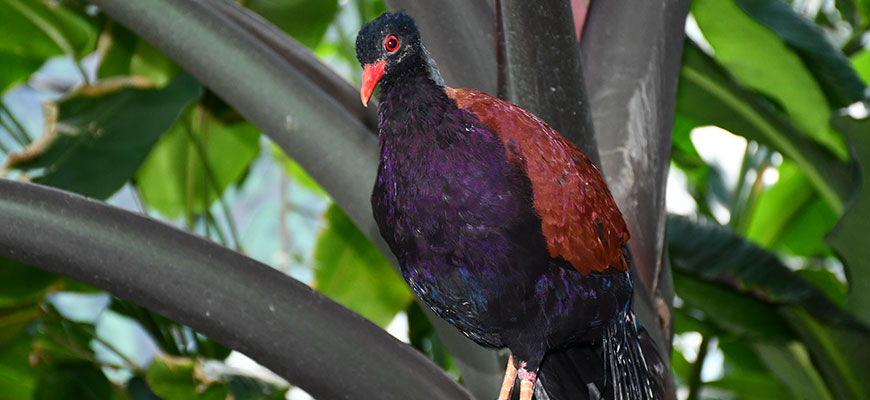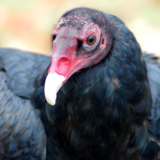CLASSIFICATION
Order: Columbiformes
Family: Columbidae
Genus: Otidiphaps
Species: nobilis
RANGE
Found on western New Guinea, Batanta and Waigeo Islands.
HABITAT
Tropical rainforest habitats.
SIZE
Weight: Apx. 1.1 lbs.
Length: 15 – 20 inches
REPRODUCTION
- Nests are found on the ground below trees and bushes.
- Females will lay one egg that will hatch in about 4 weeks.
- Both parents take turns caring for young.
- Like other pigeon species, they feed their young regurgitated crop milk.
DIET
Wild: Seeds and fallen fruits.
BEHAVIOR
There is not much known about the green-naped pheasant pigeon, and what little is known is observed from zoos. It is known that they shy away from human-inhabited areas.
POINTS OF INTEREST
- They are classified as pigeons but their behaviors resemble that of pheasants that are native to the area. This is a good example of convergent evolution, which is when two species that are not closely related evolve similarly as they fit similar niches in that environment.
- They have different calls including typical pigeon cooing sounds, drilling sounds and louder songs.
- They are primarily terrestrial birds.
STATUS
Because they avoid human-inhabited areas, they are declining but this decline has not been quantified. While they are still considered to be classified as least concern, other species in the family such as the white-necked pheasant pigeon and the black-necked pheasant pigeon are considered endangered due to deforestation. More research will be required to accurately label this species.







